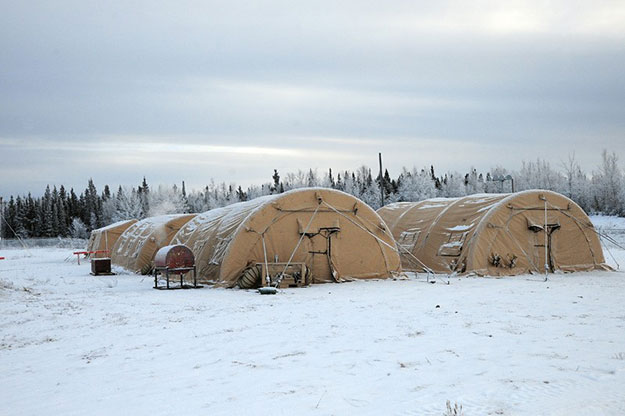For soldiers, maintaining communications in tactical command posts without being detected is essential. However, maintaining a low electronic signature is difficult because of the equipment -- computers, radios and other devices -- that are necessary to maintain communications.
The Combat Capabilities Development Command (CCDC) Soldier Center, with support from the Army's Manufacturing Technology program, known as ManTech, developed a thermal shelter insulation liner with Electromagnetic Interference, or EMI, shielding that significantly reduces detection of electromagnetic signatures.
Both the CCDC Soldier Center and ManTech, which works closely with Army organizations to identify projects that support the Army's science and technology strategy, are part of CCDC. In a recent realignment, the Army renamed Research, Development and Engineering Command to CCDC and moved it from the Army Materiel Command to the Army Futures Command. CCDC comprises eight major and three international centers and laboratories.
 "Initially, our project was started to simply reduce fuel demand to heat and cool soft-wall shelters in base camps, but the mission changed to expeditionary maneuver and reducing the ability to detect command posts on the battlefield, which became an additional imperative," said Kristian Donahue, chemical engineer at the CCDC Soldier Center.
"Initially, our project was started to simply reduce fuel demand to heat and cool soft-wall shelters in base camps, but the mission changed to expeditionary maneuver and reducing the ability to detect command posts on the battlefield, which became an additional imperative," said Kristian Donahue, chemical engineer at the CCDC Soldier Center.
The soft-wall shelter, which can be used in either hot or cold climates, reduces energy costs by saving more than 1.7 gallons of fuel per day for a 600-square-foot shelter in a moderate environment. This technology also reduces the packing volume from 100 to 40 cubic feet, reduces the logistic burden of setup and can be installed in command posts by two people in 20 minutes.
ManTech provided the necessary funding to advance the manufacturing technology, which included a roll-to-roll manufacturing process that reduced costs by using less expensive insulation. Roll-to-roll manufacturing is a continuous process that minimizes labor costs and increases production rates by reducing material handling between manufacturing steps. ManTech and the CCDC Soldier Center worked with industry partner, Warwick Mills, which provided the fabric and tent liners.
Multiple prototype liners were manufactured including eight thermal, four EMI and one thermal and EMI. The prototype shelters were evaluated for energy savings and shielding effectiveness. The liners were tested in three locations: thermal testing at Warwick Mills in New Hampshire, EMI testing at Aberdeen Proving Ground in Maryland, and operational field testing at Fort Dix in New Jersey. Additional operational testing is planned for FY19 and FY20.
There will be three variants of the shelter kit -- a pop-up bio-insulation kit, an EMI liner kit, and a bio-insulation and EMI combination kit. The shelter kit supports the Army's Network/C3I and soldier lethality modernization priorities by suppressing EMI signatures and protecting soldiers from environmental extremes.
"The ability to maintain C3 while not being detected is important for unit survivability and improving soldier lethality. Denying detection during multi-domain operations will ensure soldiers' dominance on the battlefield," Donahue said.
The project will transition to the Command Post Integrated Infrastructure program of record. The CCDC Soldier Center also has a knowledge technology transition agreement with Product Manager Force Sustainment Systems and endorsements from Program Executive Office Combat Support & Combat Service Support and the Maneuver Center of Excellence.





Read Comments